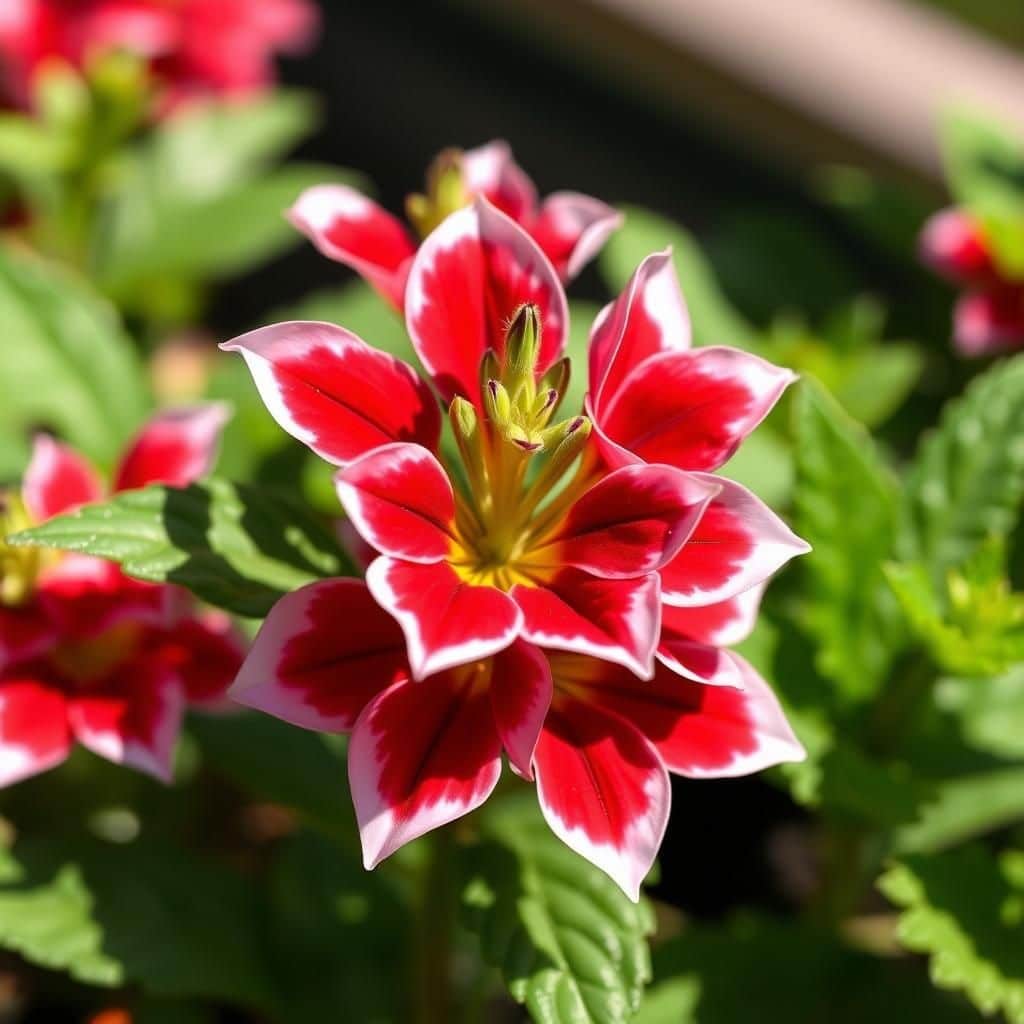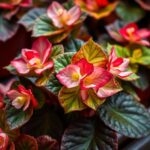Is Lobelia a Sun or Shade Plant? Discover the Best Growing Conditions for Lobelia

Lobelia is a captivating plant known for its vibrant colors and delicate flowers, making it a popular choice among gardeners. However, determining whether Lobelia thrives in sun or shade can be perplexing for many. This article delves into the optimal growing conditions for Lobelia, exploring its light requirements, soil preferences, and watering needs. By understanding whether this charming plant favors sunny spots or shaded areas, you can create the ideal environment for it to flourish. Join us as we uncover essential tips and insights for successfully cultivating Lobelia in your garden, ensuring it remains a stunning focal point throughout the growing season.
Is Lobelia a Sun or Shade Plant?
Lobelia is a versatile plant that can thrive in both sunny and shaded conditions, but its specific cultivar significantly influences its preferred growing environment. Generally, the trailing lobelia, often used in hanging baskets, does well in partial shade, while the upright varieties can tolerate full sun, particularly in cooler climates. However, when grown in full sun, it's essential to keep the soil consistently moist, as these plants can suffer from drought stress. In warmer regions, providing some afternoon shade can help maintain the vibrancy and health of the foliage and flowers.
Understanding Lobelia Varieties
There are several varieties of Lobelia, each adapted to different light conditions. The most common types include Lobelia erinus, often seen in gardens, which tends to prefer part shade, providing beautiful trailing blooms, and Lobelia siphilitica, a native species that grows best in shade or partial sun. Each type has distinct care requirements, influencing their sunlight tolerance and overall appearance.
Light Requirements for Lobelia
Lobelia typically does best in environments that provide bright, indirect sunlight or partial shade. Direct sunlight, especially in hotter months, can lead to stress and reduced flowering. For optimal growth, a location that receives morning sun and afternoon shade is ideal, allowing the plant to enjoy the warmth without suffering from heat stress.
Soil Moisture Considerations
The moisture of the soil is crucial to the successful growth of Lobelia, regardless of whether it is placed in sun or shade. These plants prefer consistently moist (but not waterlogged) soil, which helps them cope well when exposed to brighter light. In shaded areas, the soil retains moisture longer, making it easier to maintain the conditions Lobelia needs for healthy growth.
See also:
Impact of Climate on Sun vs. Shade
The impact of climate on whether Lobelia prefers sun or shade cannot be overlooked. In cooler climates, Lobelia varieties can often tolerate full sun conditions, as the less intense heat allows them to establish themselves without excessive stress. Conversely, in warmer climates, providing afternoon shade becomes essential to prevent leaf scorch and enhance flower production.
Companion Planting with Lobelia
When considering companion planting, knowing the light requirements of Lobelia is key. In shady spots, Lobelia pairs well with plants like ferns and shade-tolerant flowering species, creating a vibrant underlayer. In sunnier gardens, combining Lobelia with petunias or marigolds can create a stunning display while ensuring that all plants receive optimal sunlight without competing excessively for nutrients.
| Type of Lobelia | Sun Preference | Water Needs |
|---|---|---|
| Lobelia erinus | Partial Shade | Consistently Moist |
| Lobelia siphilitica | Shade/Partial Sun | Moist |
| Lobelia cardinalis | Full Sun/Partial Shade | Moist, Well-drained |
Understanding Lobelia's Light Requirements for Optimal Growth
Lobelia is a versatile flowering plant that can thrive in both sunny and shaded conditions, but understanding its specific light requirements is crucial for optimal growth. When grown in full sun, Lobelia produces vibrant blooms and can become bushier, but it may require more frequent watering to prevent the soil from drying out. Conversely, in part shade, Lobelia tends to flourish with a more lush and prolonged flowering period. The key to successful cultivation lies in finding the right balance of sunlight, which can significantly influence the plant's health and the vibrancy of its flowers.
Choosing the Right Variety of Lobelia
Selecting the appropriate variety of Lobelia can greatly affect its performance in different light conditions. Some varieties, like Lobelia erinus, prefer shadier spots and can thrive in partial shade, whereas Lobelia siphilitica tends to grow better in full sun. Understanding the specific requirements of each type will help gardeners make informed choices about where to plant them, enhancing their overall growth and appearance.
Soil Quality and Moisture Levels
The type of soil and moisture levels are integral to the health of Lobelia. Well-draining soil that retains some moisture is ideal, especially in sunnier locations where the plant may dry out more quickly. The addition of organic matter can help improve soil structure. For those in shaded areas, ensuring that the soil remains adequately moist without being waterlogged is crucial for the plant's longevity and blooming potential.
See also:
Temperature Tolerance and Seasonal Growth
Lobelia displays a degree of temperature tolerance, making it suitable for various climates, but it does best in moderate temperatures. In hotter summers, those in full sun may benefit from additional shade during peak heat to prevent wilting. Conversely, if planted in a cooler area, a bit more sun exposure can stimulate robust growth during the growth season.
The Role of Fertilization
Fertilization plays a significant role in enhancing Lobelia's growth, regardless of the light conditions. An application of a balanced, water-soluble fertilizer every few weeks during the growing season can promote healthy foliage and abundant blooms. However, those in shadier locations may need less frequent fertilization, as excessive nutrients can lead to lush foliage at the expense of flowering.
Pest and Disease Management in Different Light Conditions
Managing potential pests and diseases is crucial for maintaining healthy Lobelia plants. In sunnier environments, the risk of issues like aphids and powdery mildew may increase, especially if the plants are stressed from drought. Conversely, in shaded areas, while the risk might be lower, conditions can foster fungal diseases due to high humidity. Regular monitoring and implementing appropriate care can keep these problems under control, ensuring a vibrant display.
Questions from Our Readers
Is Lobelia a sun or shade plant?
Lobelia can thrive in both sunny and shady conditions, but it typically prefers partial shade. In full sun, the plant may require more frequent watering to prevent it from drying out, while in shaded areas, it tends to have a lush growth and vibrant colors.
What type of soil does Lobelia need?
Lobelia grows best in moist, well-drained soil that is rich in organic matter. Ensuring the soil retains some moisture while providing good drainage is essential for maintaining healthy Lobelia plants.
See also:
How often should Lobelia be watered?
Lobelia requires regular watering, especially in hot weather, to keep the soil consistently moist but not waterlogged. It’s crucial to check the soil's moisture level, as Lobelia does not tolerate prolonged drought.
Can Lobelia be grown in containers?
Yes, Lobelia is an excellent choice for container gardening, as it can add beautiful color and texture to patios and balconies. When planting in containers, ensure they have good drainage and use a potting mix that retains moisture without becoming soggy.

If you want to read more articles like Is Lobelia a Sun or Shade Plant? Discover the Best Growing Conditions for Lobelia, we recommend you check out our Plants category.
Leave a Reply
Related Articles